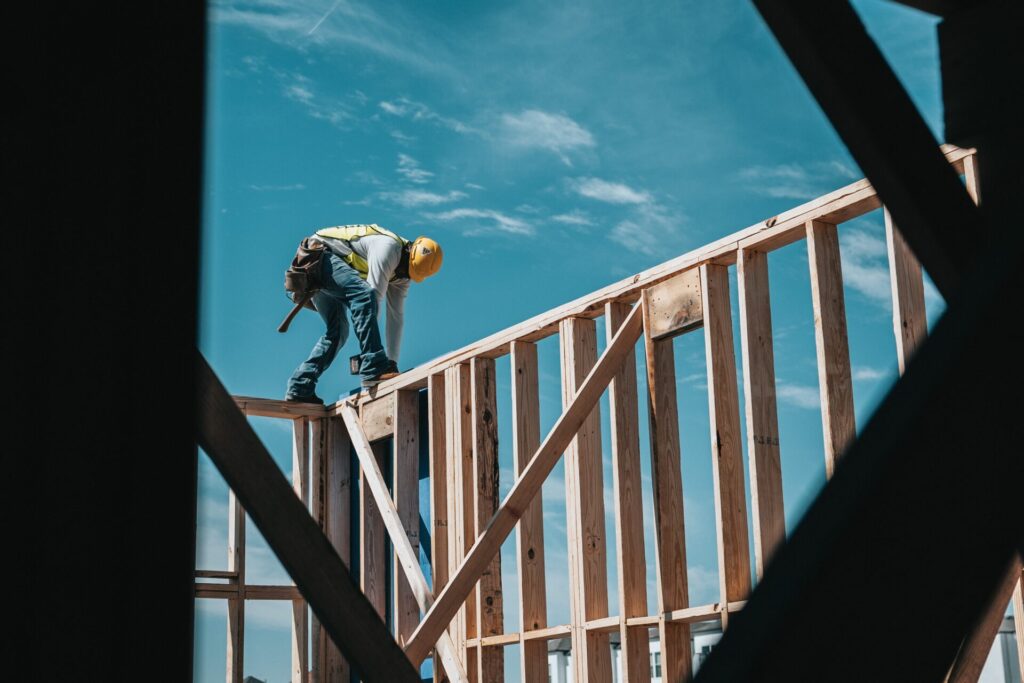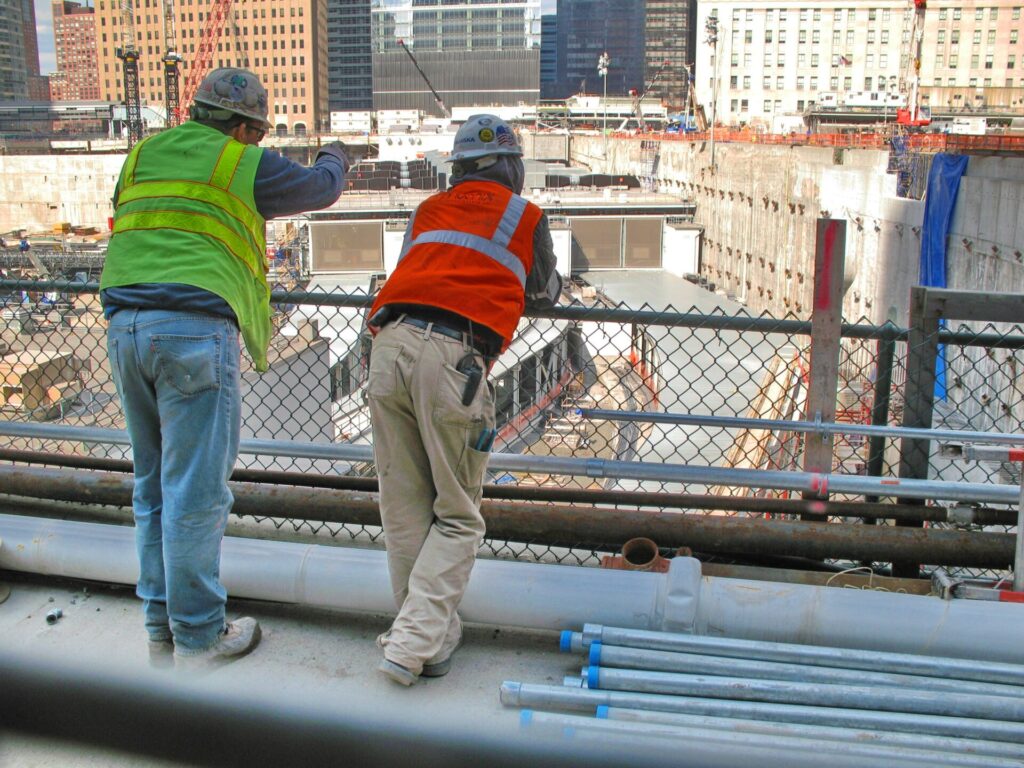Construction Safety: Common Myths, Dangers, and Misconceptions

This article is the first in a series of articles addressing the importance of construction safety, mental health awareness, and physical well-being for you, your stakeholders, and your construction teams.
The Linarc team is committed to providing you with the data, tools, resources, and best practices to help you prioritize your organization’s construction safety efforts. Our mission is to benefit you, your people, your construction business, and the construction industry.
Everyone is familiar with what construction safety looks like.
We’ve seen construction workers wearing fluorescent-colored t-shirts, reflective vests, jackets, and coats. We see personal protective equipment (PPE) everywhere. Hard hats, hearing protection, safety goggles, and gloves are mandatory. Fall protection harnesses are now standard.
On the surface, it looks as though we’re serious about our job site safety.
But statistics tell us we’re not serious about construction safety at all.
Here’s what we cover:
- Why is the construction industry so dangerous?
- The myth of macho in the construction industry
- The myth of more in the construction industry
- The role of leadership in construction safety
- Safety on the construction site begins in the C-Suite
- The benefits of making construction safety a top priority
- How can technology improve construction safety?
- Workplace safety is no accident
Why is the construction industry so dangerous?
Consider that in 2019 5,333 construction workers lost their lives on the job.
That averages more than 100 construction-related deaths weekly, or about 15 fatalities every day.
The Center for Construction Research and Training finds that construction workers suffer more fatal injuries than non-construction workers. For example, construction workers only represent 7.3% of the workforce but accounted for 21.7% of fatal injuries in 2020.
And the Occupational Safety and Health Administration (OSHA) confirms that figure.
Our industry is far beyond dangerous. It’s deadly. And it’s our fault.

The myth of macho in the construction industry
One hundred years ago, construction workers needed size, strength, and hard-driving fearlessness to succeed.
It was a male-dominated industry with no safety standards, and many tasks on the construction site were still manually performed.
Injury, death, and dismemberment were just part of the job.
But thanks to the Occupational Safety and Health Act of 1970, that’s no longer the case.
OSHA requirements, advanced building techniques, and maturing social attitudes have dramatically improved the working environment in the construction industry.
We also know that construction careers are no longer only for men.
And thankfully, more women are confirming this fact by lending their unique strengths, talents, and leadership to all areas of the industry.

But while the worksite’s physical requirements and social landscape have changed, the myth that construction workers need to be fearless, hard-working, hard-driving risk-takers persists.
The myth of more in the construction industry
Workers who take risks and push themselves to work longer shifts receive more pay as a reward.
The more hours you work and the more work you do, the more money you can earn. So, as a result, employees push their bodies and minds beyond their safe and natural limits.
There’s also a stigma around employees who take time off for personal matters. As a result, these workers are often considered weak and unreliable and typically overlooked for promotion.
However, workers who persist in these practices are not only rewarded with better compensation; they often end up in leadership roles due to their ‘work ethic.’
Unfortunately, this strengthens the ‘hard worker’ fallacy and supports the dangerous myth that risk and extended work shifts are the only way to succeed in construction.
Unfortunately, this cycle results in tired, distracted workers taking risks, getting injured, and worse—losing their lives.
And all for the sake of a paycheck or a promotion?
We have to do better.
The role of leadership in construction safety
Leadership builds the culture of an organization.
And just as the hard-driving risk-taking leaders build cultures that mirror and reward those values, we can also reverse that cycle.
Our mission is to develop a safety-oriented culture that rewards mental health awareness and physical wellness culture that sustains a firm commitment to occupational safety standards.
But it has to start at the top.
“…in my experience, most troubles and possibilities for improvement add up to something like this: 94% belongs to the system (responsibility of management)…”
—W. Edwards Deming ‘Out of the Crisis,’ page 315

Safety on the construction site begins in the C-Suite
A commitment to worker safety, mental health, and physical well-being requires more than lip service or lofty visions written into mission statements.
Health, wellness, and occupational safety must be part of an ongoing dialogue that includes every team member.
C-Suite executives need to communicate these values by allocating the resources necessary to prioritize their workforce’s physical and emotional well-being.
Project managers, superintendents, and crew leaders must support these initiatives by promoting safety on the job site.
In addition, they should regularly follow up with their crew members to ensure they meet OSHA standards and schedule ample personal time off work to sustain their mental, emotional, and physical health.
And it’s important to note that a commitment to safety is not a financial burden, and encouraging employees to take time off work for their mental, physical and emotional health does not negatively impact production.
The benefits of making construction safety a top priority
If reducing fatalities, eliminating lost work time due to injuries, and maintaining a happy, healthy work environment isn’t enough motivation to make construction safety a priority, OSHA provides several additional resources to seal the deal.
For instance, OSHA’s $afety Pays tool weighs a company’s profit margin against the average costs of injuries and illnesses taken from their OSHA Form 300A. The measurement determines how workplace injuries are genuinely affecting the bottom line.
And the OSHA Individual Injury Estimator tool shows what specific injuries cost in lost productivity and profit.
Additionally, this survey from business insurance provider EMPLOYERS® (NYSE: EIG) details how important safety in the work environment is to existing and potential new employees.
The survey found that workplace safety was a top consideration when candidates were evaluating a new job offer—second only to compensation and workplace location.
Creating a safe and healthy work environment needs to be the industry’s top priority if we ever hope to fill the gaping void in our shrinking labor pool.
How can technology improve construction safety?
Fortunately, numerous tools are at our disposal for creating a safety-conscious culture.
Many construction companies use construction management software to run their projects. This software makes it easy to keep safety awareness at the forefront of every project task.
The software can be used to schedule, document, and perform safety training, daily huddles, and toolbox talks, which educate and reinforce a safety-first culture.
Work assignments can be dispatched to field crews detailing step-by-step safety measures to be installed before commencing work. And the mobile app can also accompany the foreman or superintendent as they make their daily safety walk to ensure their team members are meeting OSHA safety standards.
Workplace safety is no accident
For more construction safety resources, contact your Linarc construction management expert today.
We want to help you prioritize construction safety in your organization for the benefit of your people, your construction business, and our industry.




